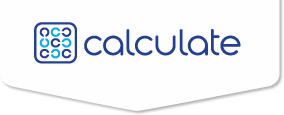It’s Time to Own the Value of the Liberal Arts

The project, which Detweiler presented last week to presidents of the Council of Independent Colleges, revealed the strong, positive effect of a liberal arts education — especially in terms of quality of life, career success, and yes, income.
Yet, higher education always seems to be “making a case” for the liberal arts and humanities. We continue to fight a cultural misconception, one that diminishes the value of analytical thinking, effective communications, and ethical decision making in exchange for earnings.
In many ways, this is a classic marketing dilemma: colleges and universities need to do a better job selling the value of a complex “product,” which happens to be both expensive and misunderstood. A tough sell, but certainly not impossible. How?
Messaging, messaging, messaging: Use national data — there’s plenty available. Detweiler’s study found that graduates of a liberal arts education are:
- 25-45% more likely to be leaders in their careers and communities
- 27-38 % more likely to report characteristics of lifelong learners
- 25-60% more likely to be altruistic
- 32-90% more likely to report feeling fulfilled in their lives
- 31-72% more likely to hold a high-level position and earn more than $100,000
Also, consider the Association of American Colleges and Universities 2014 report which includes a number of gems, this among them: “At peak earnings ages (56-60 years) workers who majored as undergraduates in the humanities or social sciences earn annually on average about $2000 more than those who majored as undergraduates in professional or pre-professional fields.”
Blend the national data with your institution’s own success story by creating a bank of alumni stories. These short narratives can chronicle the career (and life) success of your liberal arts alumni. Use their words and try to include a variety of ages, majors, and careers.
Go digital. Of course, your messages should be included in all recruitment material (viewbook, search pieces, program brochures), but remember to repurpose the messages for your website and social media platforms.
If possible, develop a digital enrollment campaign that can target and engage like-minded prospective students. After all, they cite statistical and anecdotal success stories as key influencers to their college decision. Plus, the added value of a digital campaign is that it supports other aspects of your recruitment efforts through increased website and social traffic.
It’s time to own the value of the liberal arts — proudly and with elan!

